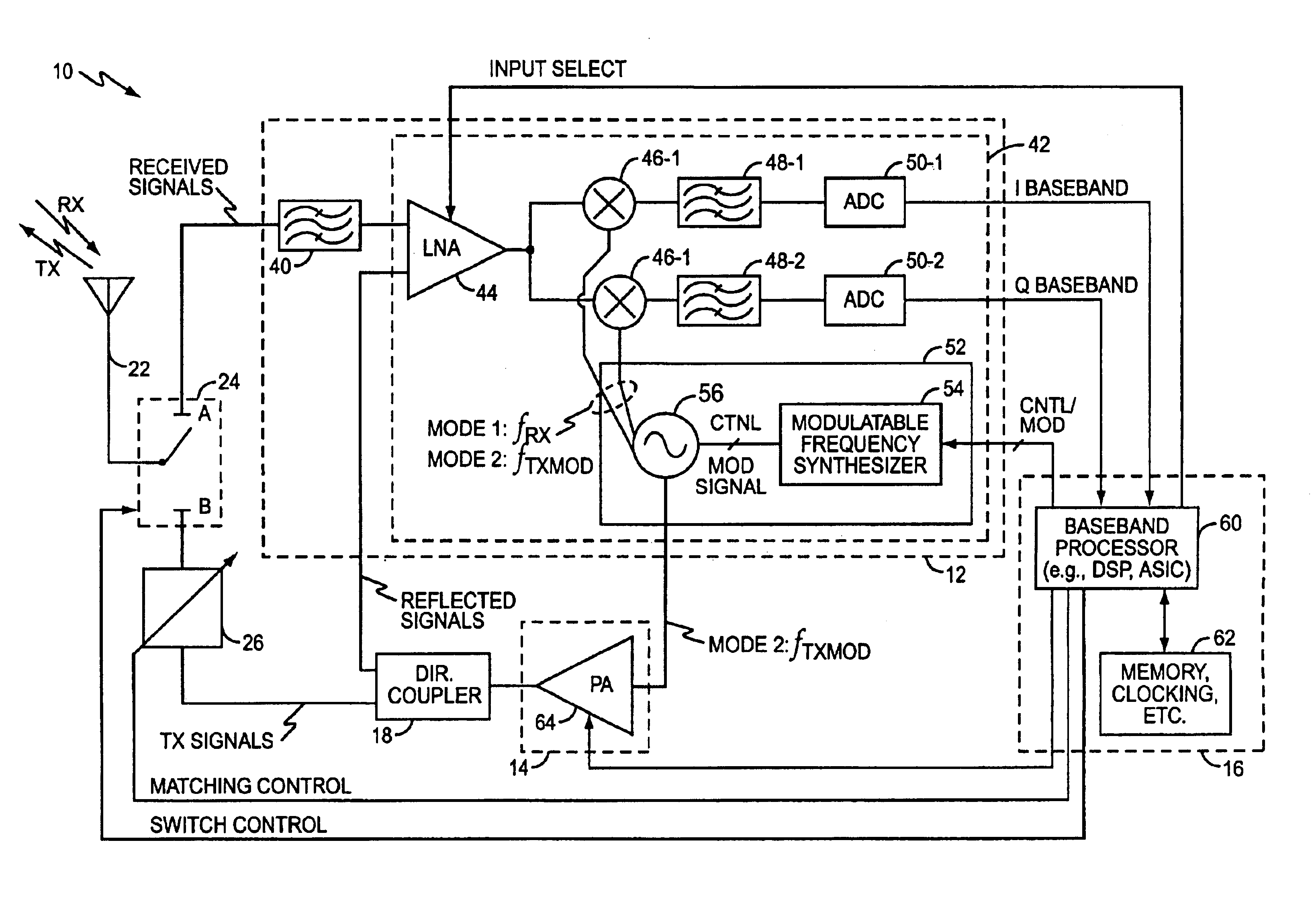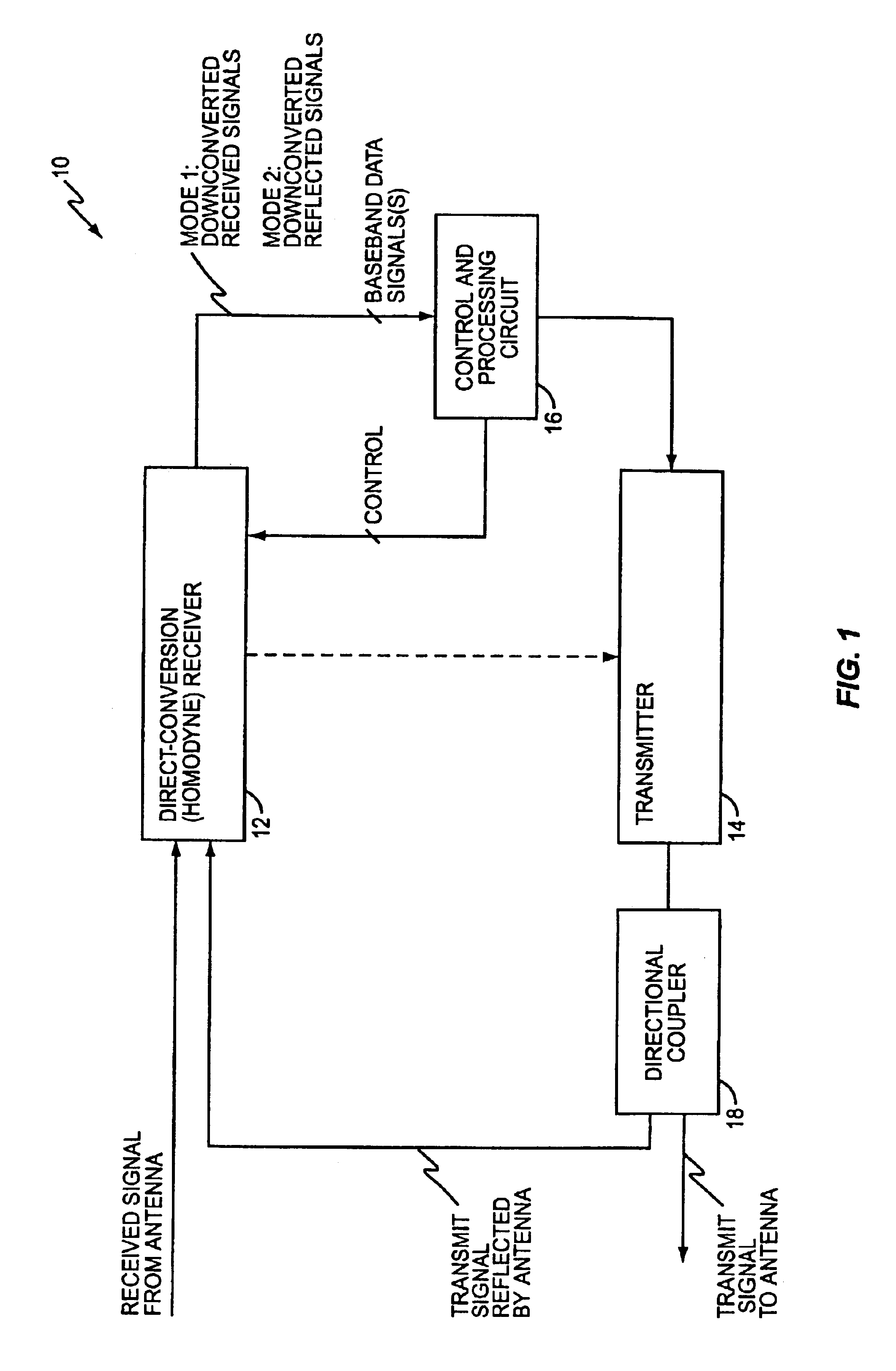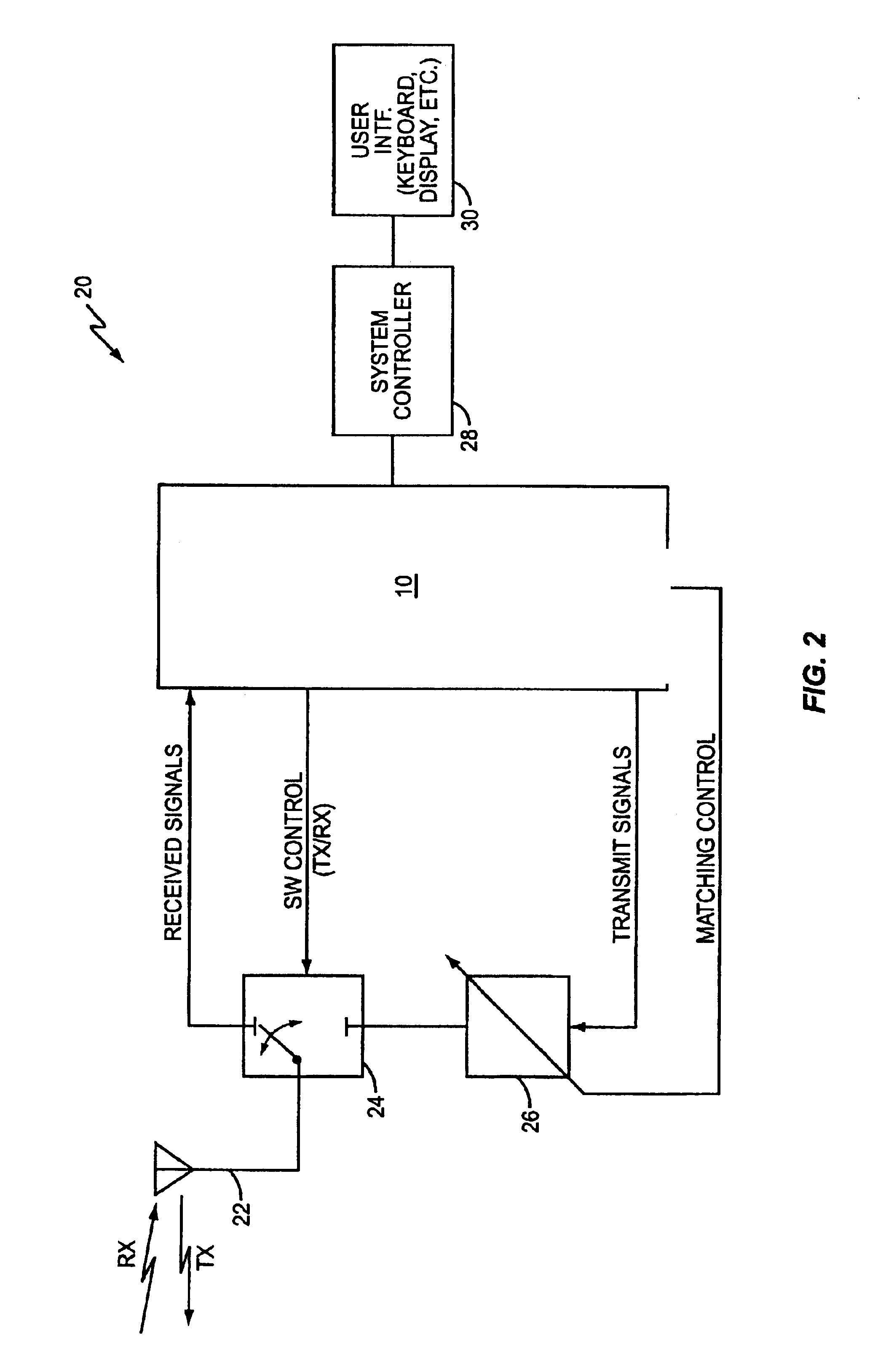System and method for adaptive antenna impedance matching
a technology of adaptive antenna and impedance matching, applied in the field of wireless communication, can solve the problems of antenna impedance, complicated task, and decidedly more difficult impedance matching in dynamic environments, and achieve the effect of simplifying signal processing and removing transmit signal modulations
- Summary
- Abstract
- Description
- Claims
- Application Information
AI Technical Summary
Benefits of technology
Problems solved by technology
Method used
Image
Examples
Embodiment Construction
FIG. 1 illustrates an exemplary transceiver 10 in accordance with the present invention. Here, transceiver 10 comprises a direct-conversion (homodyne) receiver 12, a transmitter 14, control and processing circuits 16, and a directional coupler 18. Generally, the transceiver 10 operates in one of two modes. In a first mode, the receiver 12 is used to downconvert received signals obtained from an associated antenna (not shown) and, in a second mode where the transmitter 14 is active, the receiver 12 is used to downconvert antenna-reflected transmit signals. Thus, in the first mode of operation, the control and processing circuits 16 process the baseband signal output by receiver 12 to obtain received signal information transmitted from a remote station and, in the second mode of operation, processes the baseband signal output by receiver 12 to characterize a transmitter-to-antenna impedance mismatch.
More particularly, during the second mode of operation, the transmitter 14 generates a...
PUM
 Login to View More
Login to View More Abstract
Description
Claims
Application Information
 Login to View More
Login to View More - R&D
- Intellectual Property
- Life Sciences
- Materials
- Tech Scout
- Unparalleled Data Quality
- Higher Quality Content
- 60% Fewer Hallucinations
Browse by: Latest US Patents, China's latest patents, Technical Efficacy Thesaurus, Application Domain, Technology Topic, Popular Technical Reports.
© 2025 PatSnap. All rights reserved.Legal|Privacy policy|Modern Slavery Act Transparency Statement|Sitemap|About US| Contact US: help@patsnap.com



